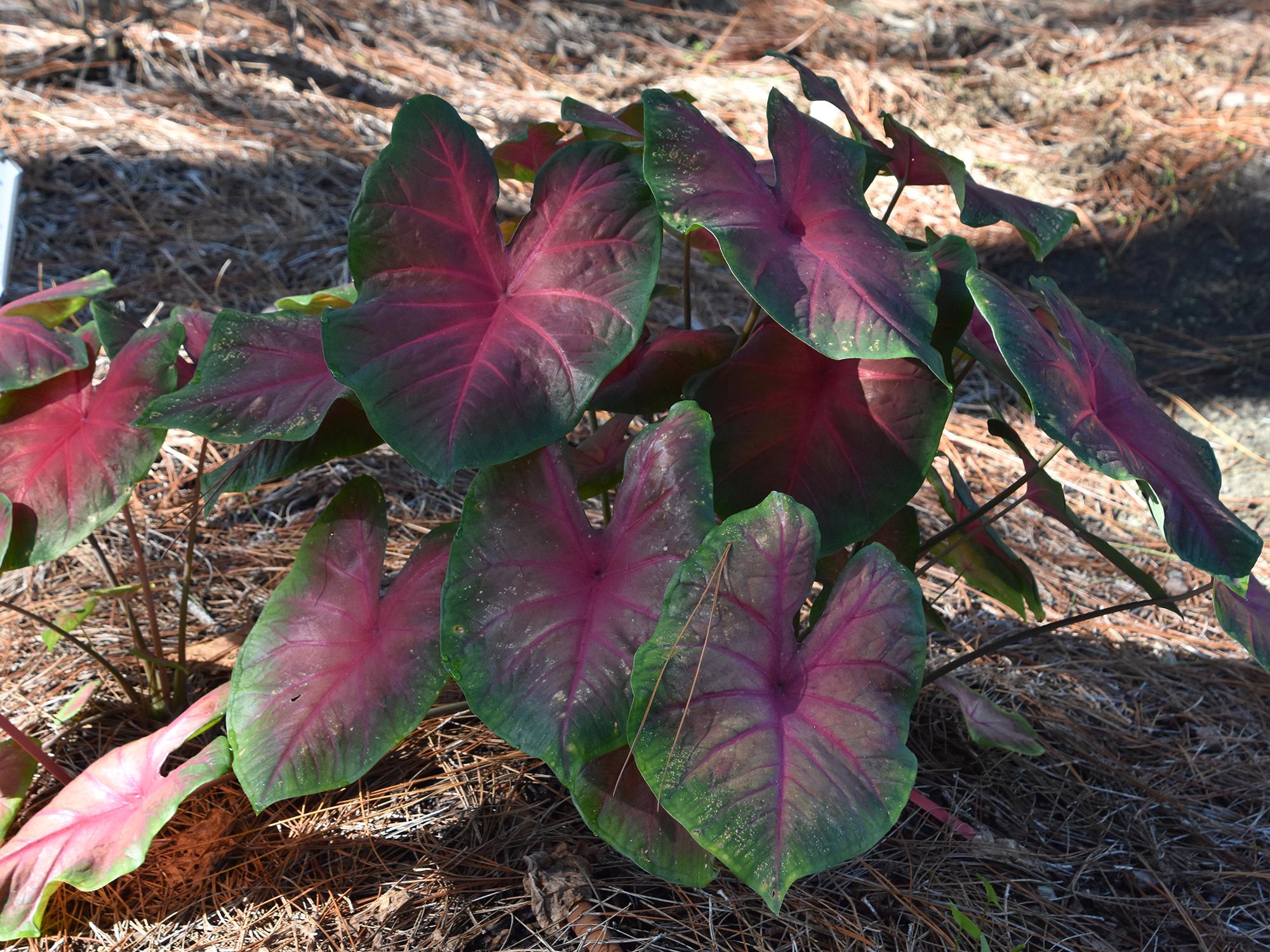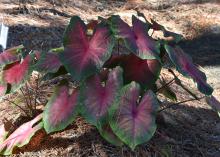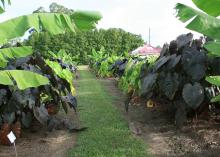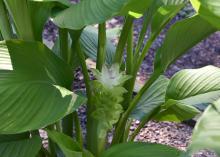Information Possibly Outdated
The information presented on this page was originally released on August 22, 2016. It may not be outdated, but please search our site for more current information. If you plan to quote or reference this information in a publication, please check with the Extension specialist or author before proceeding.
Tropical-looking plants give late summer show
I make a point every week to walk around our plant trial beds at the Coastal Research and Extension Center in Biloxi to see how everything is growing. Lately, I’ve been impressed by some of the landscape plants with tropical-looking foliage that are putting on a late summer show right now.
While it’s too late to plant some of these this year, I want to give you a couple of good ideas for plants to have in your garden and landscape for future summers.
One group of plants I seem to be amazed at each year are caladiums. I think they have a bad reputation as not being tough, because let me tell you: They are tough.
We grow caladiums because of their colorful leaves that can range from solid colors to the most flamboyant color combinations. Even during the hottest periods of summer, caladiums are colorful additions to the landscape.
Caladium foliage is distinctive. The midribs on the leaves provide streaks and flashes of color, many times providing high contrast to the rest of the foliage. Foliage colors include reds, pinks, whites and greens, and these come in various shades and combinations.
A caladium group called Painted Frog from Plants Nouveau has performed well in our coastal Mississippi landscape in both partial and full sun. Tie-Dyed Tree Frog has green leaves with a mottled yellow variegation that looks like splattered paint. Poison Dart Frog has a waxy appearance with dark-green leaves that are red splotched. But my favorite is Red-Bellied Tree Frog with its dark-green-edged leaves saturated with bright lava-red centers.
Elephant ears are possibly the ultimate tropical plant, and they just scream for attention wherever they grow. Most gardeners I know love elephant ears because they are easy to grow and have a big impact. There are lots of green-leaved elephant ears, but I tend to gravitate to the darker colors, like black.
Black Coral has large, glossy, chocolaty-black leaves with finely ruffled edges. This variety offers some of the deepest and darkest elephant leaves available in the market. Diamond Head is an outstanding Colocasia with foliage that is black and lustrous, just like its namesake volcanic cone on the island of Oahu.
Mississippi State University is also trialing a surprising tropical-looking plant that most gardeners are more familiar seeing in the kitchen cabinet: turmeric. Turmeric, which is a close relative of ginger, produces large leaves that have the desired tropical look and thrive in our coastal heat and humidity.
These plants form clumps and spread by rhizomes, which by the way, is the edible portion of the plant. Down in the middle of the foliage, turmeric forms attractive, white flowers tinged with pale-pink edges. It’s not surprising that these plants are commonly called Hidden Ginger.
We’re going to see how turmeric grows in the ground and overwinters on the Coast. We know it grows well in containers in north Mississippi, where cold-weather protection is required.
One nice thing about all of these plants is that they can be readily propagated by root offshoots. That means you can spread them around the garden or better yet, share them with family and friends.
Our trial site in Biloxi is one of five that MSU has around the state. Learn more about these trial gardens in this Southern Gardening column from 2015: http://extension.msstate.edu/news/southern-gardening/2015/trial-gardens-offer-good-info-home-gardeners.
Editor's note: Dr. Gary Bachman is an Extension and research professor of horticulture at the Mississippi State University Coastal Research and Extension Center in Biloxi. He is also the host of the popular Southern Gardening television and radio programs.













